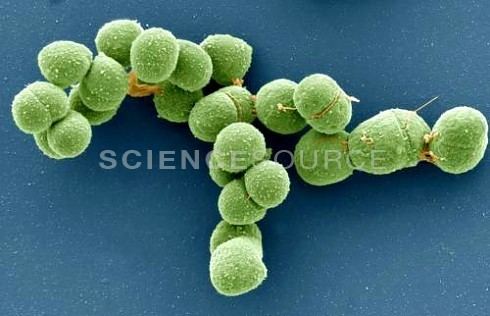Rank Order | ||
 | ||
Similar Archaeans, Halobacteriaceae, Haloarchaea, Euryarchaeota, Halobacterium | ||
Medical vocabulary what does halobacteriales mean
In taxonomy, the Halobacteriales are an order of the Halobacteria, found in water saturated or nearly saturated with salt. They are also called halophiles, though this name is also used for other organisms which live in somewhat less concentrated salt water. They are common in most environments where large amounts of salt, moisture, and organic material are available. Large blooms appear reddish, from the pigment bacteriorhodopsin. This pigment is used to absorb light, which provides energy to create ATP. Halobacteria also possess a second pigment, halorhodopsin, which pumps in chloride ions in response to photons, creating a voltage gradient and assisting in the production of energy from light. The process is unrelated to other forms of photosynthesis involving electron transport; however, and halobacteria are incapable of fixing carbon from carbon dioxide.
Halobacteria can exist in salty environments because although they are aerobes they have a separate and different way of creating energy through photosynthesis. Parts of the membranes of halobacteria are purplish in color. These parts conduct photosynthetic reactions with retinal pigment rather than chlorophyll. This allows them to create a proton gradient across the membrane of the cell which can be used to create ATP for their own use.
